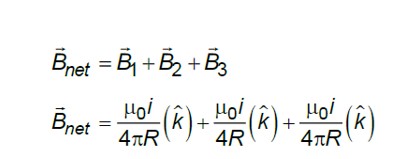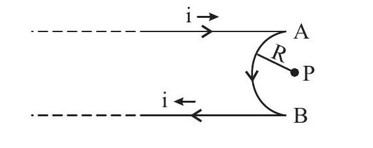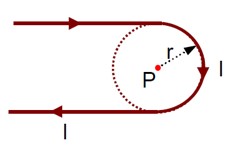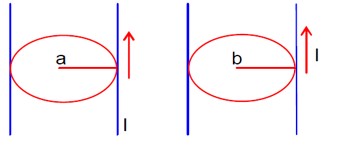Magnetic Field due to a Current Element
Get insights from 12 questions on Magnetic Field due to a Current Element, answered by students, alumni, and experts. You may also ask and answer any question you like about Magnetic Field due to a Current Element
Follow Ask QuestionQuestions
Discussions
Active Users
Followers
New answer posted
a month agoContributor-Level 10
If currents are flowing in same direction, magnetic field will cancel each other, so the currents must flowing in opposite direction
I = 30 A

New answer posted
a month agoContributor-Level 9
When the ring rotates about its axis with a uniform frequency fHz, the current flowing in the ring is
I=q/T=qf
Magnetic field at the centre of the ring is
New answer posted
a month agoContributor-Level 9
for current\

1 unit Area ®
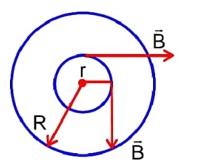
Now, consider Amperian loop of radius small 'r' ln Amperian loop magnetic field will be tangential to the amperian loop.
(Ampere circuital law)
![]()
New answer posted
2 months agoContributor-Level 9
In external magnetic field, a magnetic force acts on every small part of the loop in direction perpendicular to the wire. Thus, loop assumes a shape (circular) in which it covers maximum area
New answer posted
2 months agoContributor-Level 10
The magnetic field B is calculated as:
B = 2 * (μ? I / 4πr) + (μ? I / 4πr) = (μ? I / 4πr) * (2 + π)
New answer posted
2 months agoContributor-Level 10
BA = μ?Iθ / 4πR
⇒ BA/BB = IAθARB / IBθBRA
⇒ (2(3π/2)(4)) / (3(π/3)(2))
⇒ 6/5
New answer posted
2 months agoContributor-Level 10
As b > a
The magnetic field inside the wire (r
For wire with radius a, B increases linearly to r=a, then decreases. For wire with radius b, B increases linearly to r=b, then decreases. Since a
B? = µ? I / 2πa
B? = µ? I / 2πb
(Note: The question is likely asking for the graph representation, which is option A based on the formulas.)
Taking an Exam? Selecting a College?
Get authentic answers from experts, students and alumni that you won't find anywhere else
Sign Up on ShikshaOn Shiksha, get access to
- 65k Colleges
- 1.2k Exams
- 682k Reviews
- 1800k Answers


